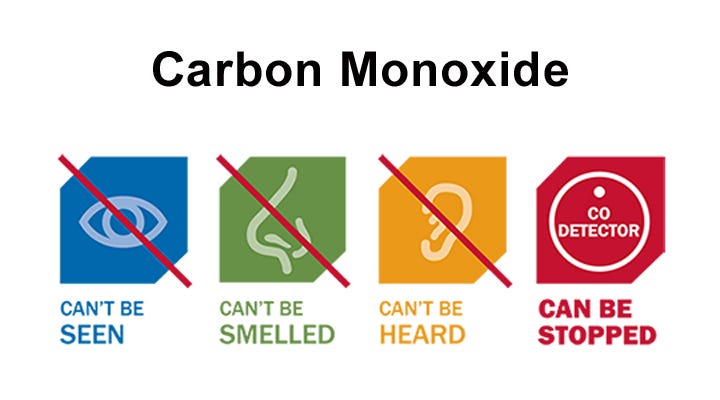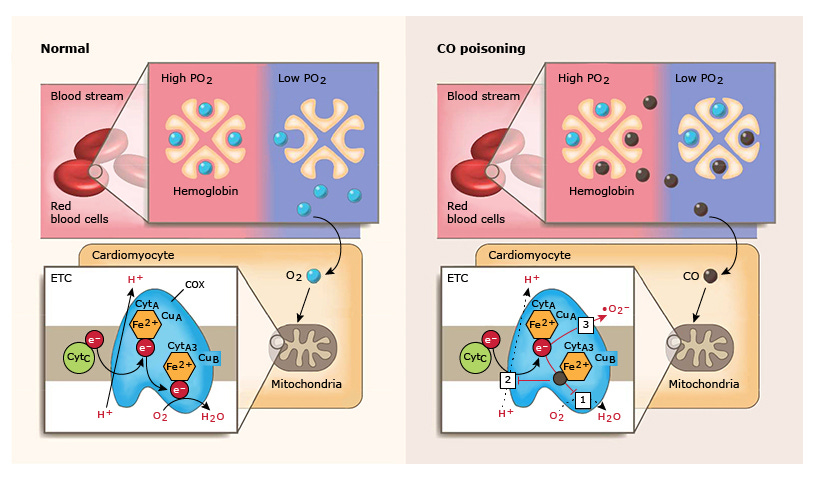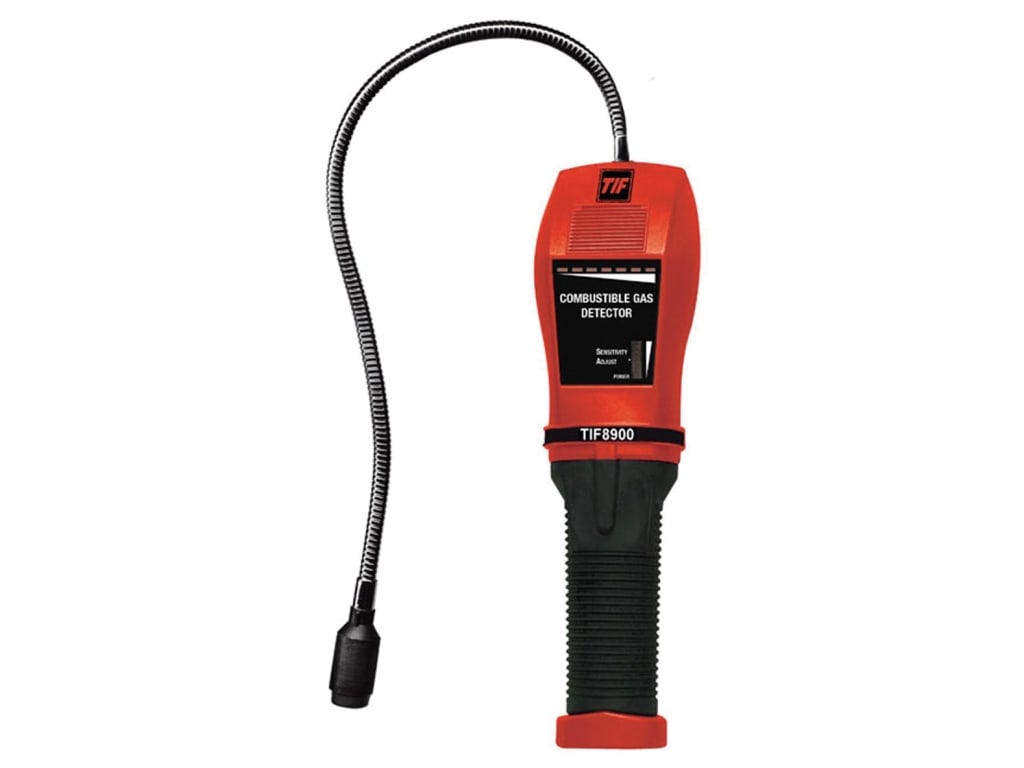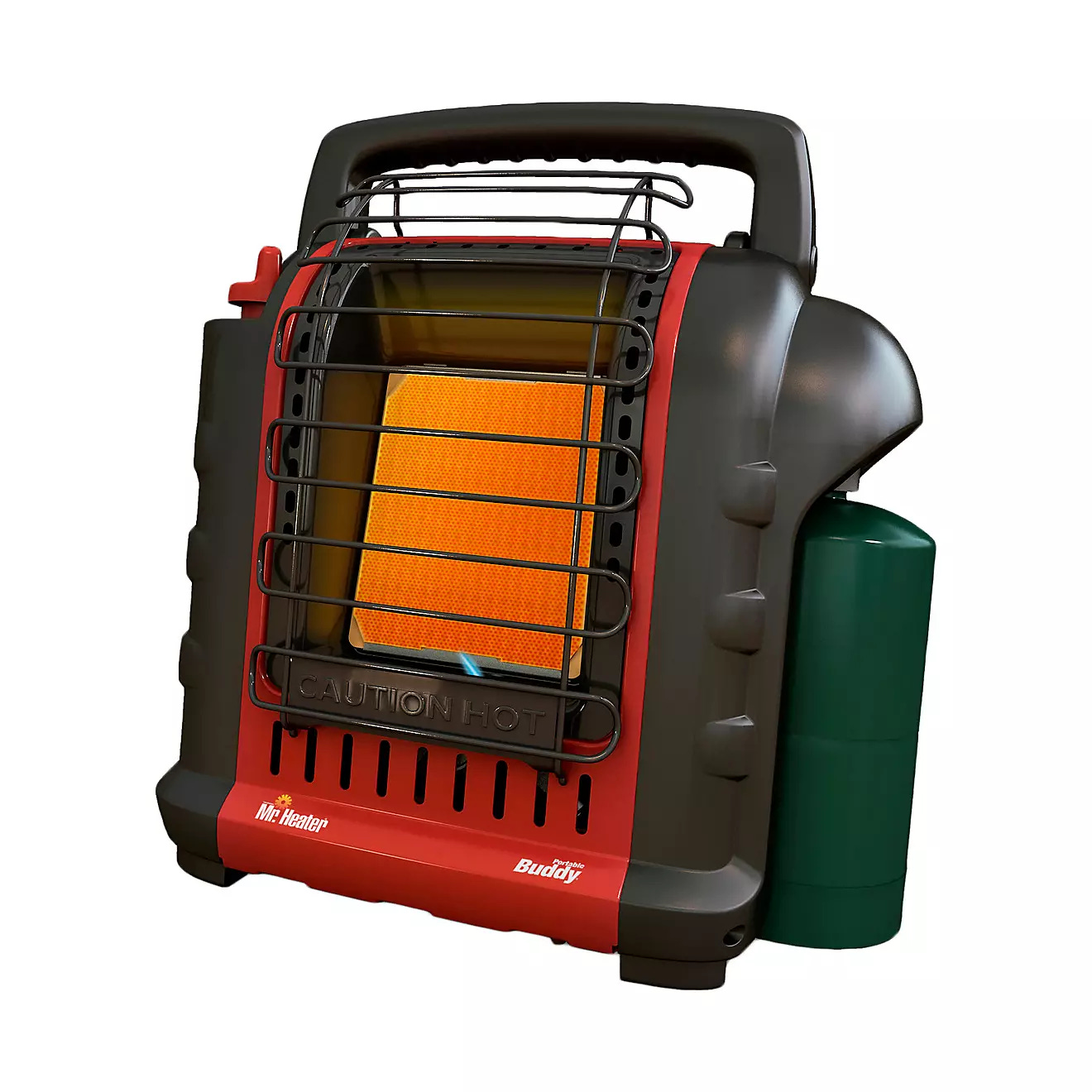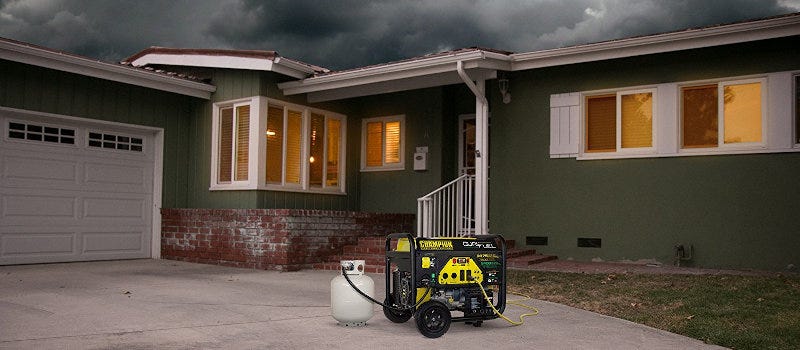It’s late October.
You turn on the pellet stove for the first time this season.
Works well. You settle in for the night.
You wake up with an awful headache, blurry vision, and nausea.
You stumble to the bathroom to throw up. Your legs don’t work right.
You find your significant other there, passed out on the floor.
They have vomit on their face and all over the toilet.
You call 911.
What happened?
Carbon Monoxide - the silent killer
Carbon monoxide (CO) is a colorless, odorless gas.
It is produced by the incomplete combustion of fuels.
It is a risk whenever something burns.
How It Hurts
Your organs need oxygen to function.
When you breathe, your blood absorbs oxygen from the air through your lungs.
When you breathe CO, it binds to your blood 240x more strongly than oxygen.
It prevents oxygen from binding to your blood well.
It also stops your body from using the oxygen it CAN bind.
It also releases damaging chemicals in your body (reactive oxygen species).
Common scenarios include:
Poorly functioning heating systems.
Improperly vented fuel-burning devices (lanterns, kerosene heaters, grills, gas generators).
Cars left running in poorly vented areas.
Fires.
*I put fires last here because the presence of a fire should be obviously dangerous.
The symptoms it causes are nonspecific.
That means they are found in a lot of other diseases.
This can make it hard to recognize even for EMS and docs.
Be vigilant, especially if multiple people have similar symptoms at the same time.
What To Do
Get out of the area.
Call 911.
Fire departments often have equipment that can test for blood CO levels through a finger.
They have equipment that can measure air levels of CO.
EMS can do an assessment of the affected people and start initial therapy with oxygen by facemask.
How To Prep For It
CO can be detected by machines.
CO monitors are required by code, specifics depending on state.
Some have built-in batteries rated for 10 years. (paid link)
Some plug in and have a 9V battery as backup. (paid link)
Some are combination smoke and CO detectors and can be hardwired. (paid link)
Put one on every floor of your home including the basement.
Install them how the manual says to.
Test them regularly.
I test mine once a week. Press the button until it beeps.
Note that this tests the circuitry but not the CO sensor itself.
You can buy canisters of CO gas to test the actual sensor too.
Follow the manufacturer’s instructions.
If you make propane or kerosene heaters part of your prep, get a battery powered CO detector.
Test it with a fresh battery.
Take the battery out and tape it to the detector.
Store it with the heater.
That way it’s ready to go.
Use the heater in a big area and open the windows (as the environment and OPSEC allow).
Same thing for camping cook stoves.
If you use a portable generator, move it 20 feet away from the garage.
NOT in the garage. That traps CO.
Even if the door is open, there is likely poor airflow within the 3 remaining walls.
Angle the exhaust away from open doors and windows.
Quiz
Which of the following doesn’t produce CO?
Campfire
Electric space heater
Kerosene lamp
Oil boiler
Propane kitchen stove
What’s the first step when you think someone might have CO poisoning?
Gather important documents.
Open a window.
Call 911.
Evacuate everyone outside.
True/false: CO detectors are always different from smoke detectors.
True
False
True/false: CO poisoning can be mistaken for the flu or other viral illnesses.
True
False
Take home points
CO is dangerous.
It’s present everywhere something is being burned.
It can kill you in minutes.
Get CO monitors if you don’t have them.
Remember to test them if you do.
Answer key:
b.
The electric space heater doesn’t combust fuel to produce heat.
d.
Evacuate. Opening a window might not be sufficient.
b.
Combination smoke and CO detectors are sold as well as standalone units. Check which one you have.
a.
Symptoms of CO poisoning are not specific (headache, vomiting, dizziness) and can lead to misdiagnosis or delayed diagnosis. It can be hard to reliably figure out without blood testing, especially if the patient is confused or doesn’t recognize what happened to them.
Bonus facts
Smokers can have a carboxyhemoglobin level of 10%-15% because of the smoking. Normal is about 1% in nonsmokers.
Very sick patients who have been in fires are often treated for cyanide poisoning because the burning of common household items (wool, plastics, rubber, melamine) produces hydrogen cyanide gas.
Severe CO toxicity is treated in a hyperbaric oxygen chamber, just like divers use for diving-related illnesses.
Free subscriptions get access to all content, past and present.
If you would like to support the page, consider leaving a donation on Ko-fi.





